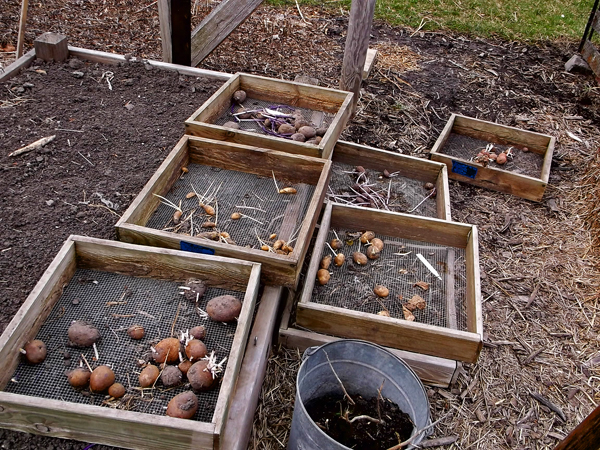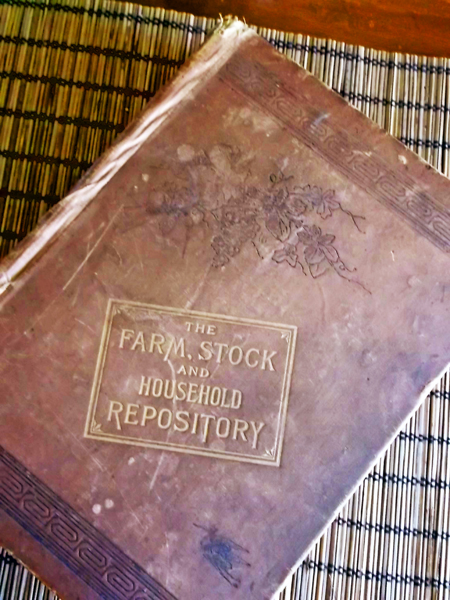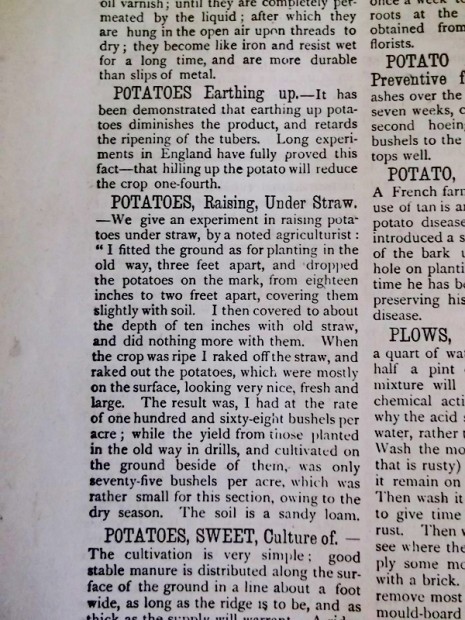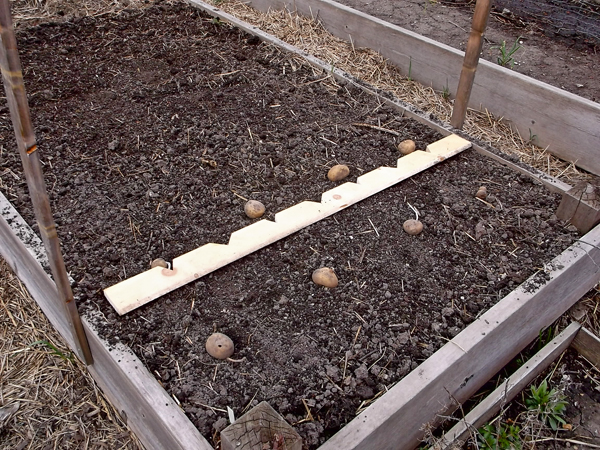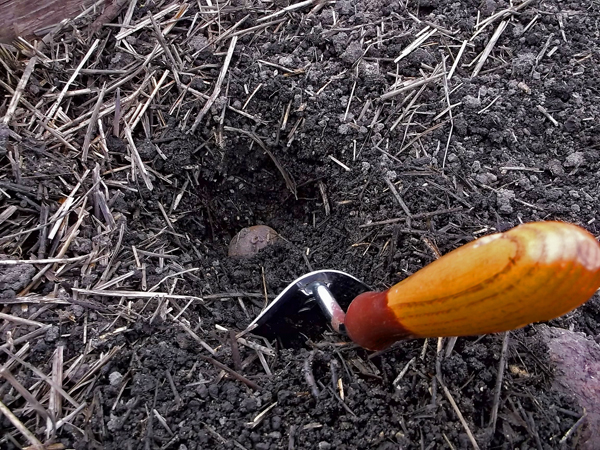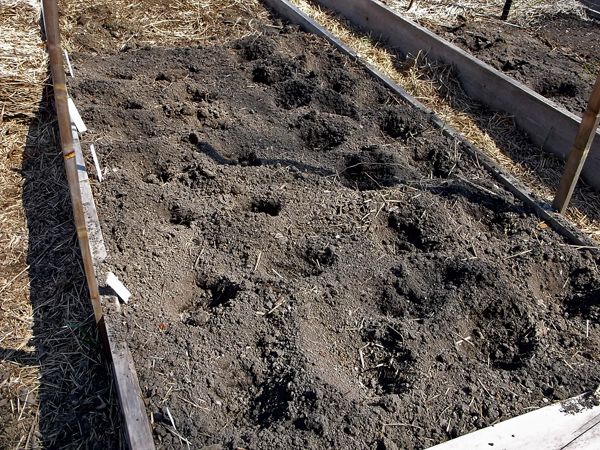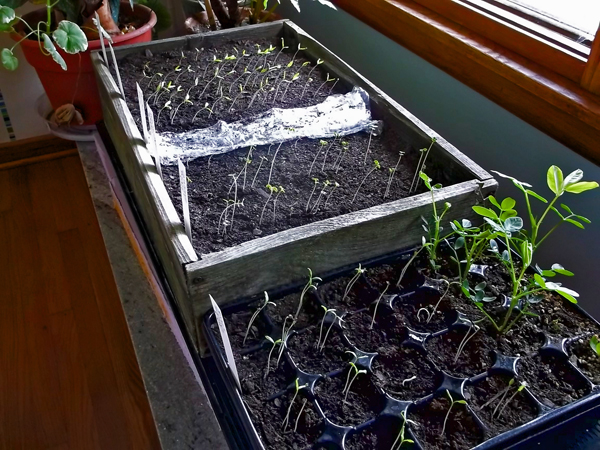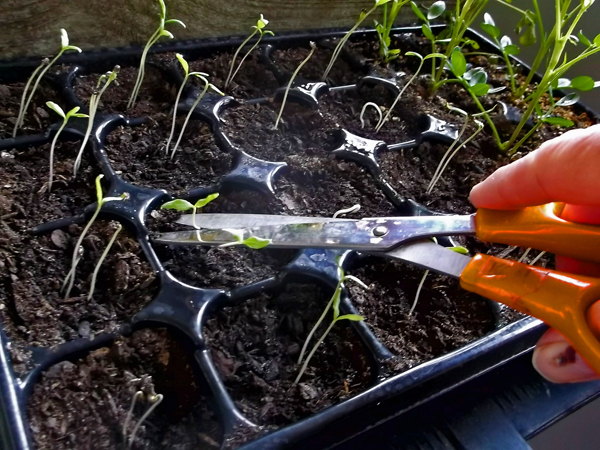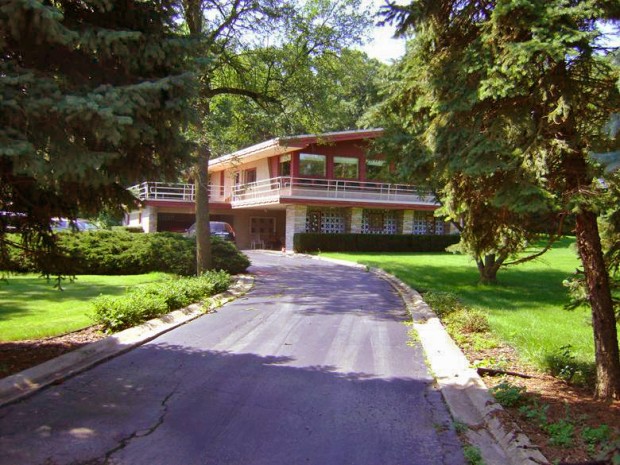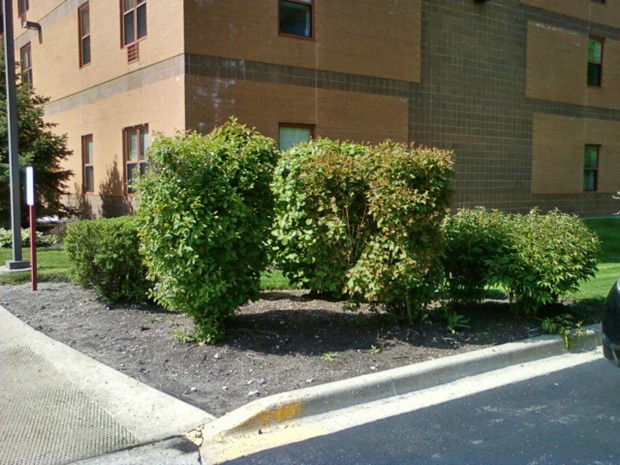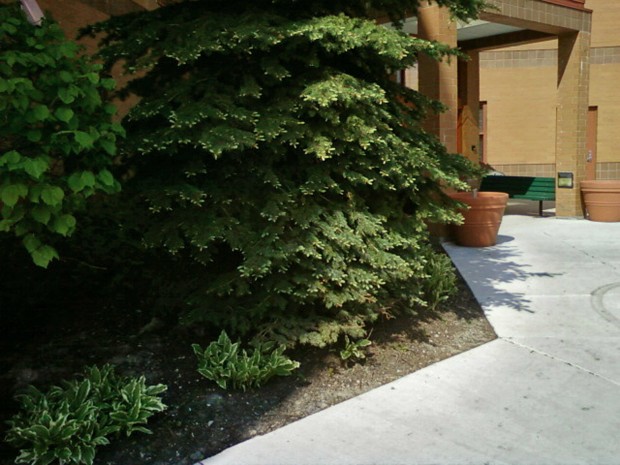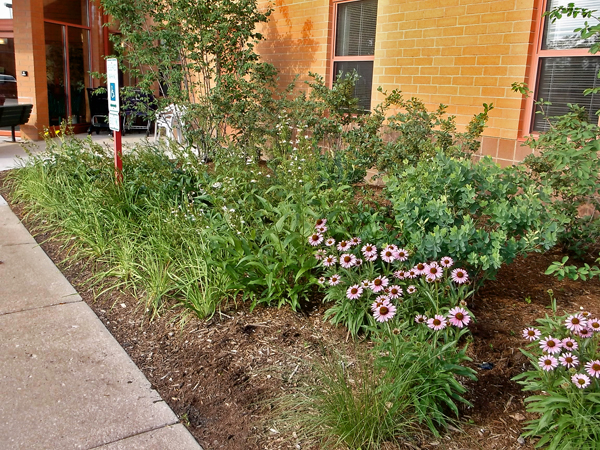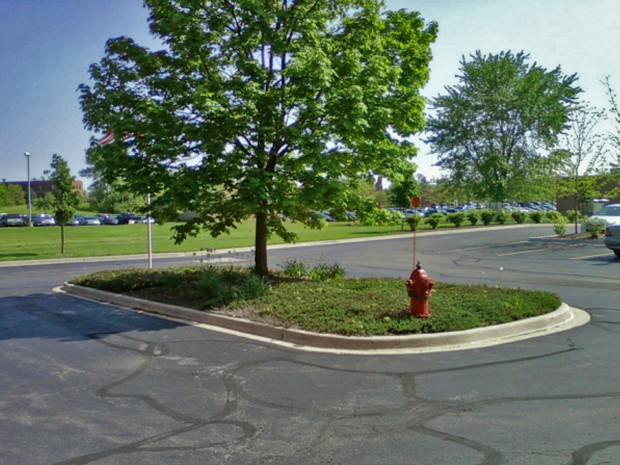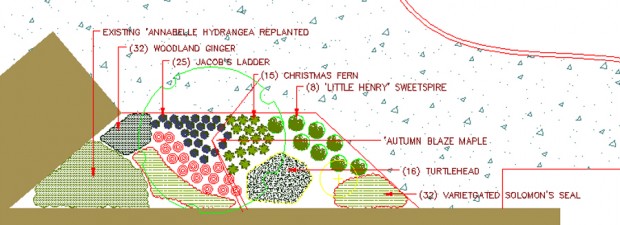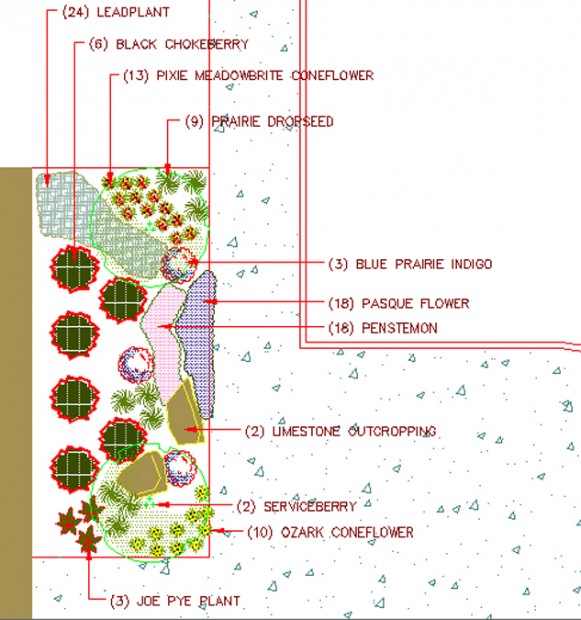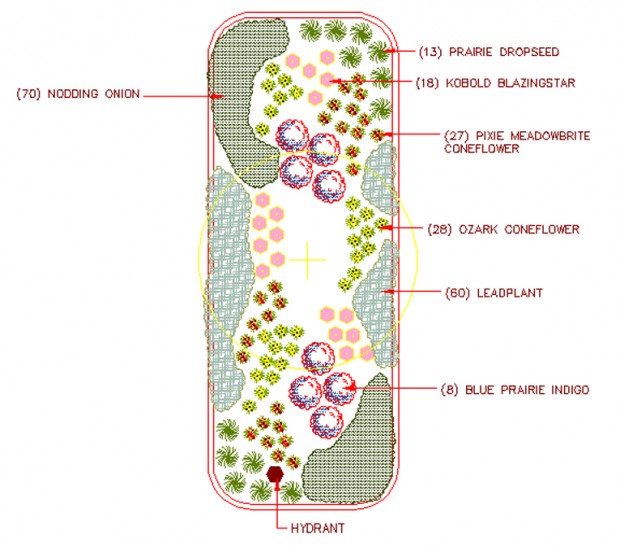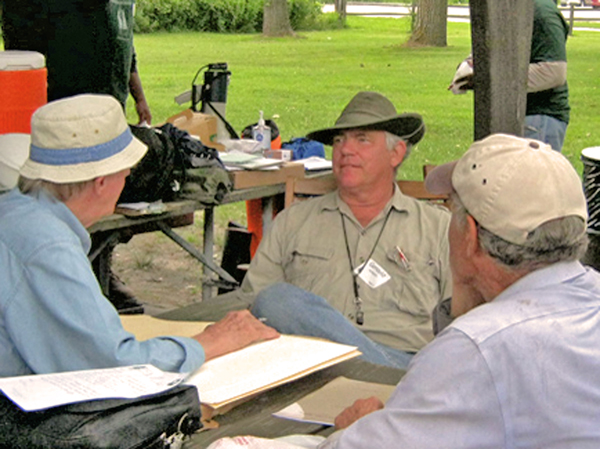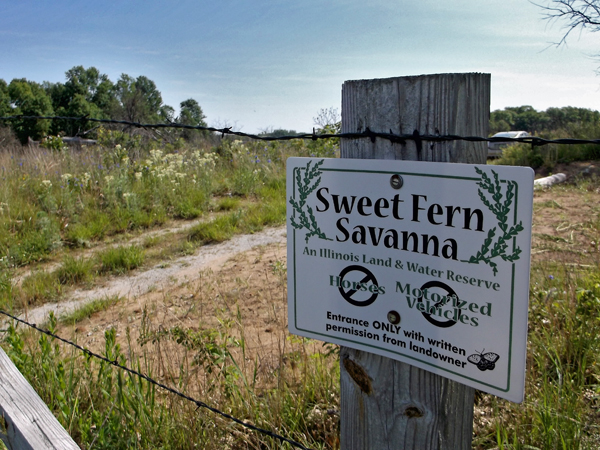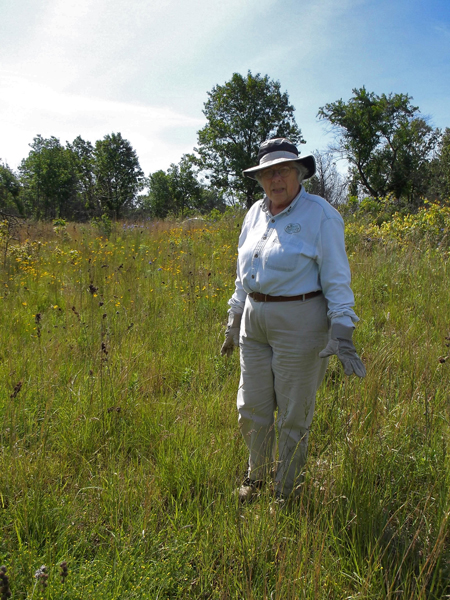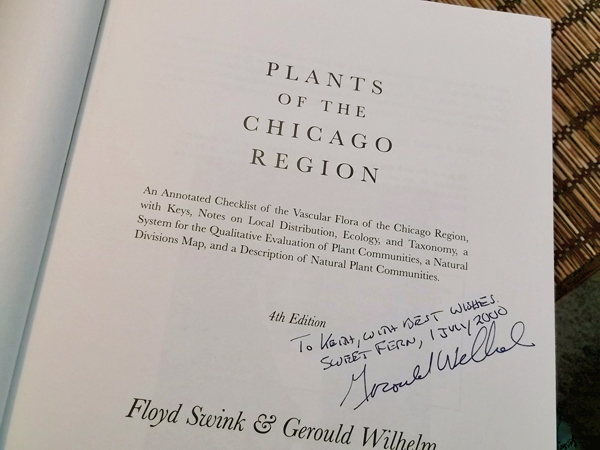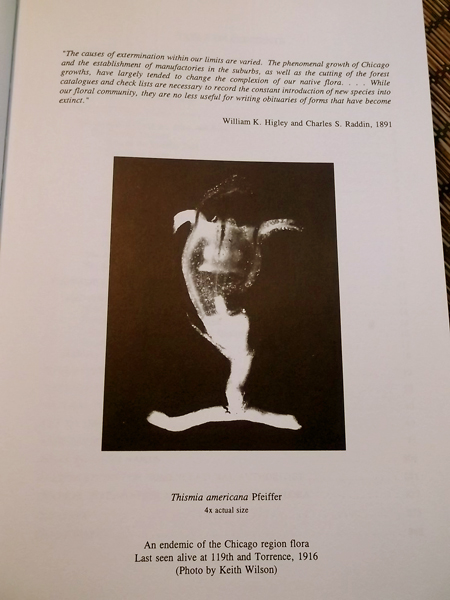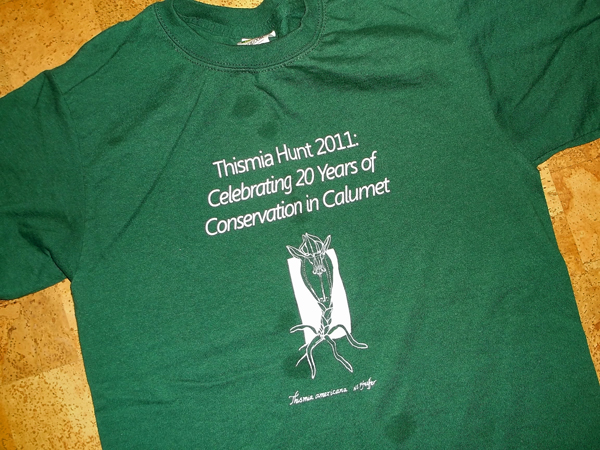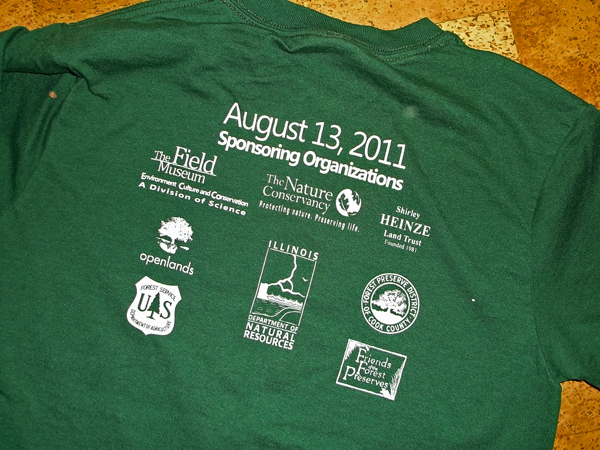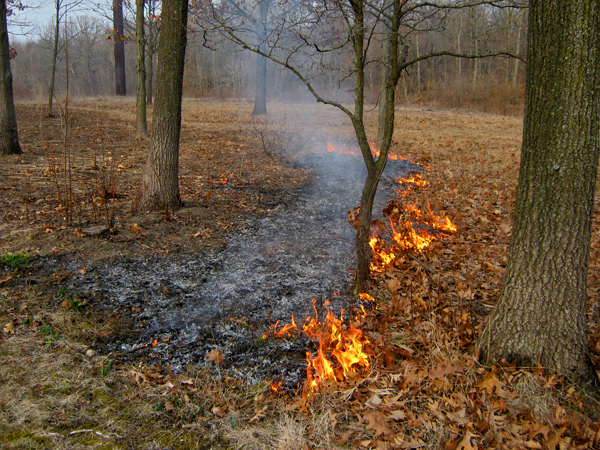After being stored in a windowless room in my basement all winter, the potatoes were brought out in to the sunlight to be planted. I grow seven kinds of potatoes: Kennebec, Yukon Gold, Red Norland, Russian Fingerling, Adirondack Red, Adirondack Blue, and Viking Purple.
· Kennebec, Late season, good winter keeper, large to very large tubers, tan skin, white flesh, developed in Maine in the 1940’s, released to the public in 1948. Good boiled, mashed, or baked.
· Yukon Gold, Early to Mid-season, good winter keeper, medium tubers, tan skin, bright yellow flesh, developed in the 1960’s in Ontario, Canada, release to public in 1980. Good for boiling or baking, as well as frying.
· Red Norland, Early season, poor winter keeper, medium tubers, red skin, cream colored flesh, developed in North Dakota in the 1950’s, good boiling potato and often harvested mid-summer as a “new potato.”
· Russian Fingerling (aka. Russian Banana), Mid to Late-season, fair winter keeper, elongated small tubers, tan skin, yellow flesh, developed in the Baltics, good boiling potato, roasted, or pan fried.
· Adirondack Red, Early to Mid-season, poor winter keeper, small/medium tubers, red skin, pink flesh, high in anti-oxidants, Developed at Cornell University in New York State, released to the public in 2004, good roasted, mashed, pan fried.
· Adirondack Blue, Mid-season, poor winter keeper, small/medium tubers, purple skin, deep purple flesh, high in antioxidants, Developed at Cornell University in New York State, released to the public in 2003, good mashed. roasted, or boiled.
· Viking Purple, Mid to Late-season, good winter keeper, large tubers, purple/rose skin with pure white flesh, good baked, mashed, or fried.
Traditionally, many folks used Good Friday to mark the day for potato planting, and since Easter always falls on the Sunday following the first full moon after the spring equinox, that day is also a “planting by the stars” tradition. In any event, potatoes are very cold hardy, and as long as the soil can be worked, and temperatures are on the rise, potatoes can be planted.
Last year, I tried the straw method, a la Ruth Stout. Ruth Stout was an East Coast gardener who wrote a few books about her “no-work” gardening methods. Ruth would lay her seed potatoes on the ground, then throw straw on top of them – no digging, no work. When I tried that method, all I managed to harvest was a bunch of slug eaten tubers, most not fit to eat. I was also encouraged to try the straw method when I read about it in my old Farmer’s Encyclopedia from the late 1800’s – the excerpt is shown below:
This year I’ve gone back to a more traditional method. Many books talk about digging a trench and pushing the soil to one side, then as the potatoes grow, push the soil back around the plants, and hilling the soil up around the plants – which the old farmer’s encyclopedia advised against – who to believe? The trench method may work fine, if you have the room – these same books want the gardener to space the seed potatoes 18 inches apart, in rows 36 inches apart, my garden is not that big. I simply dug down about six inches, put down a potato tuber, then slightly covered the potato. When it starts growing, I’ll push the rest of the soil back over the tuber. Other than mulching with some straw to shield any potatoes forming near the soil surface from the sun, and turning green (green=solanine=toxin=inedible potato.)
I laid out my potatoes with approximately a one foot spacing, once I determined that my layout would work, I dug my hole and placed in a seed potato (seed potato = an untreated and disease-free tuber, used to grow a potato plant – super market spuds are treated to retard growth, an may not grow, if planted.)
Vegetable Seed Update
A week ago vegetable seeds were planted, both inside and out, you can read about that here. Of the carrots, lettuce, and beet seeds that were planted outside, so far, only the lettuce is making an appearance. Meanwhile, inside, the tomato, pepper, ground cherry, parsley, and broccoli seeds are all up in just a weeks time. Bottom heat certainly helps.
The tomato and broccoli seedlings were thinned to a spacing of about an inch and a half, or so. Scissors were used to clip off the unwanted seedlings rather than pulling, since pulling out the unwanted plants may disturb the roots of the other plants.
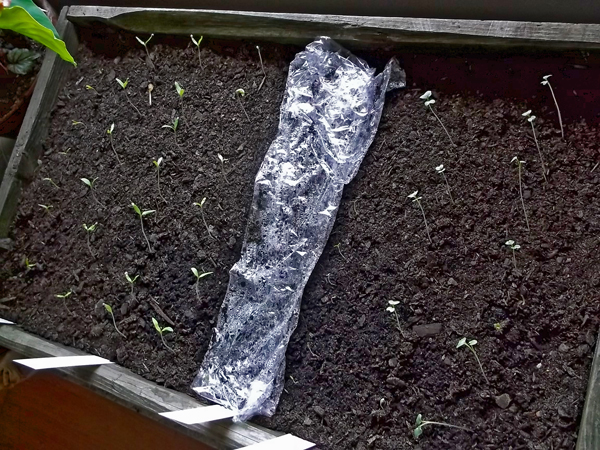
The appearance after thinning. The plastic wrap still covered the unsprouted parsley – the cover was removed today, as they have now come up.
Over the next few weeks as daytime temps get into the 60’s and 70’s the flats of vegetable seedlings will start to spend some of their time outside – at first in a wind and sun protected area and for less than an hour, then each day the time will be extended and more exposure to the sun will be possible as the plants “harden off.”

